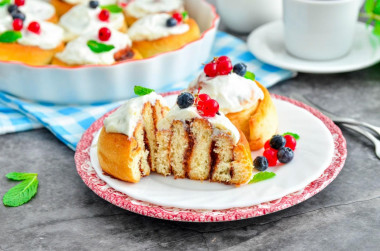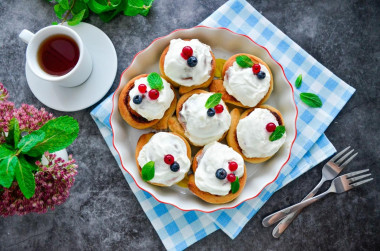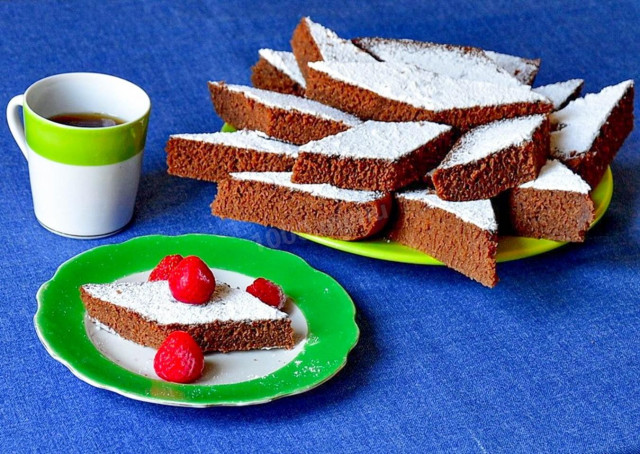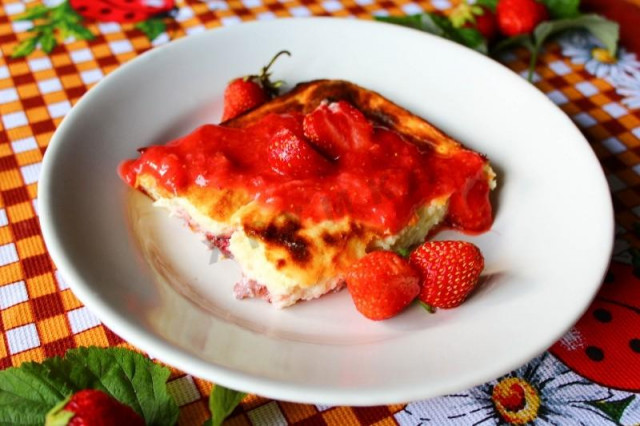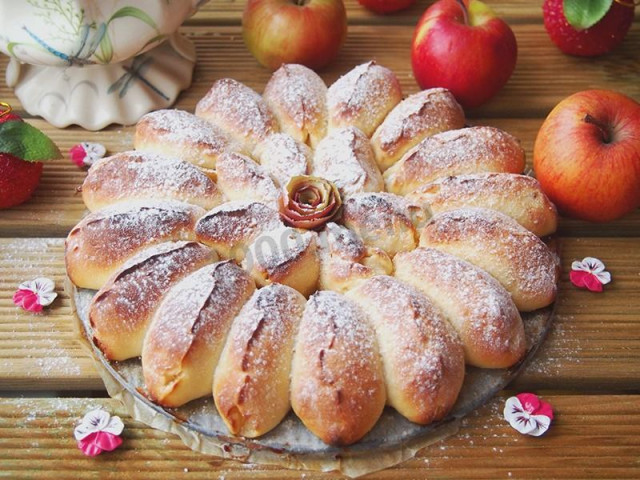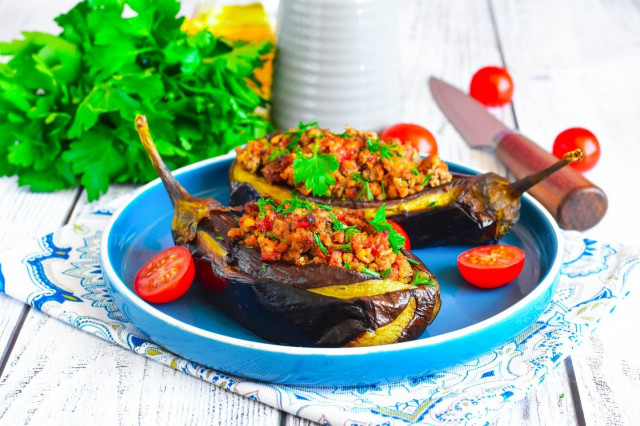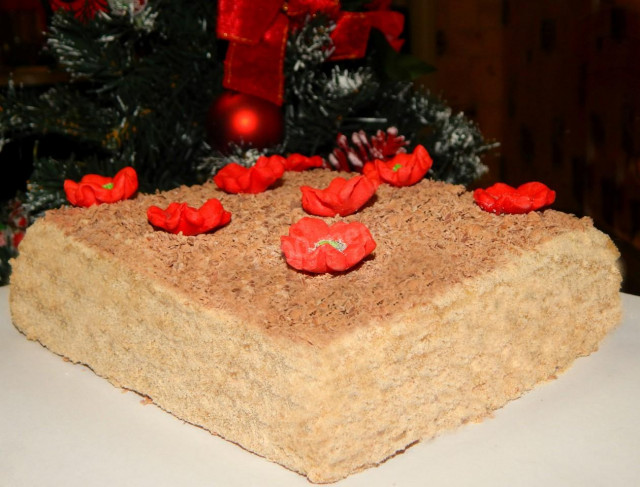Composition / ingredients
Step-by-step cooking
Step 1:

How to make sweet Snail buns with cinnamon and sugar? Prepare the products. First for the test. Choose the best quality butter, without vegetable additives, corresponding to GOST. Take the egg out of the refrigerator in advance, it should warm up. If you did not have time to do this, then hold it in warm water for a while. Milk is suitable for any fat content, yeast is fast—acting.
Step 2:
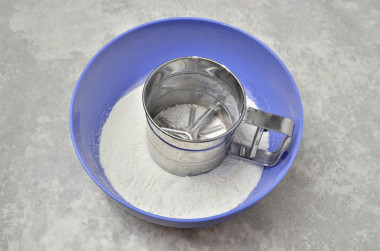
Take a large bowl and sift flour into it. It is important to sift the flour to saturate it with oxygen. Then the baking will turn out to be airy and will rise well when baking. Do not add all at once, start with 2/3 of the total volume, the rest will be poured as the dough is kneaded, if necessary.
Step 3:

Add sugar and yeast to the flour. Beat in the egg. Be sure to wash the eggs before use, as even the seemingly clean shell may contain harmful bacteria. It is best to use food detergents and a brush. Mix the products. Heat the milk to a temperature of about 40 degrees, no more — a hot environment will kill live yeast. Melt the butter in any convenient way and cool to a warm state.
Step 4:

Gradually pouring in warm milk, start kneading the dough. After the milk, pour the melted butter into a bowl. Continue kneading with your hands. Due to the addition of oil, the dough will very quickly become homogeneous and will gather into a lump. If it is too sticky, then add more flour. I didn't need to add, it took about 500 g. Cover the bowl with the dough and put it in a warm place for an hour and a half for proofing.
Step 5:

Meanwhile, prepare the products for the filling. Butter also take the best and highest quality, melt it in any way. Read about how to do this at the end of the recipe. You can take both white and brown sugar, as you prefer. I have a reed one. Also adjust the amount of cinnamon to your liking.
Step 6:
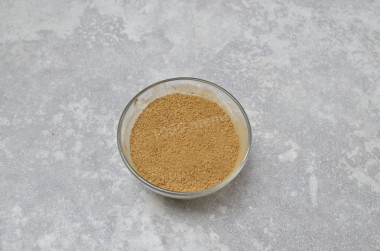
Mix cinnamon with sugar.
Step 7:
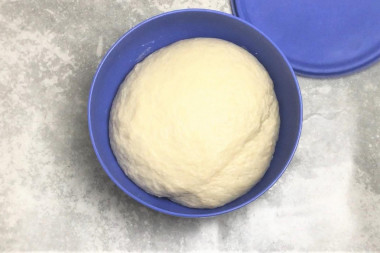
The dough should double in an hour and a half. Divide it into two parts, so it will be more convenient to work with it.
Step 8:
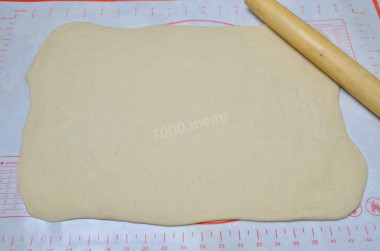
Roll out each part into a rectangular layer about 1 cm thick. If necessary, sprinkle the work surface with flour so that the dough does not stick.
Step 9:
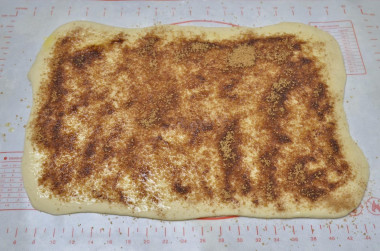
Using a cooking brush, brush the dough with melted butter. Sprinkle it evenly with a mixture of sugar and cinnamon.
Step 10:
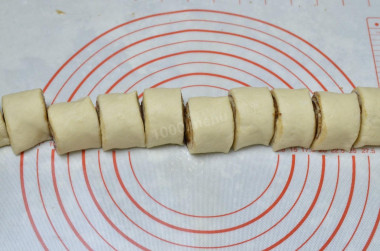
Twist the layer into a tight roll on the long side. Cut it into equal pieces 3-4 cm wide. I got 12 pieces from each half.
Step 11:
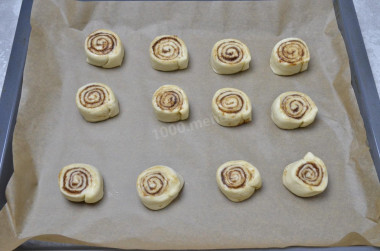
Cover the baking sheet with baking paper and spread the buns on it. Leave a distance between them, as the buns will grow in size. Cover the baking sheet with a towel and leave for 30 minutes for proofing.
Step 12:
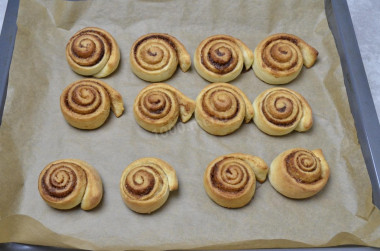
Preheat the oven to 190°C. Bake the buns for 12-15 minutes until browned. Keep in mind that everyone's ovens are different. The temperature and cooking time may differ from those specified in the recipe. Focus on your technique. Remove the finished rolls and cool slightly.
Step 13:

Prepare the curd impregnation. You can take soft cottage cheese or any cottage cheese for her. I used ricotta.
Step 14:
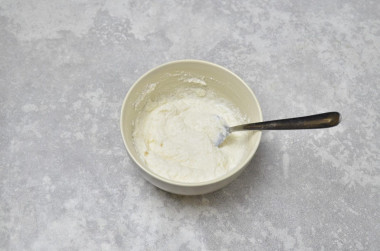
Mix cheese (or cottage cheese) with powdered sugar and vanilla. Put vanillin quite a bit, on the tip of the knife, in large quantities, vanillin begins to taste bitter.
Step 15:
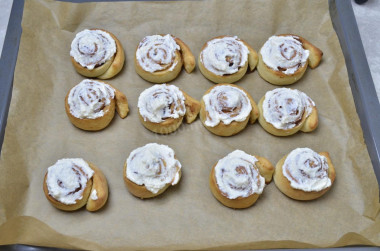
Lubricate the warm rolls with cottage cheese impregnation. You can make buns without it, as you like.
Step 16:
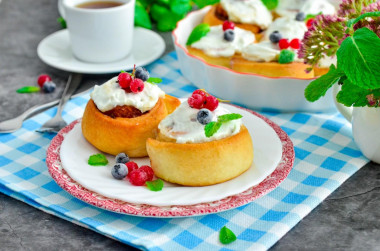
Serve the buns to the table. Enjoy your meal!
Be prepared for the fact that flour may need more or less than indicated in the recipe. Focus not on the amount of flour, but on the desired consistency of the dough. To avoid mistakes, read about flour and its properties!
What is the difference between vanilla, vanillin, vanilla extract and vanilla sugar, how to use and replace them correctly, so as not to spoil the taste of the dish , read in this article .
Butter can be melted in the microwave or in a water bath.
How to melt butter in the microwave?
Cut the butter into small pieces and place it in a special container. To prevent the oil from splashing when heated, cover the oil vessel with a paper towel. The oil should be melted either at the lowest power or in defrosting mode. At first, five seconds will be enough. Next, if the butter has not melted yet, set it again for 5 seconds and start the microwave. Repeat the process several times until the desired result.
How to melt butter in a water bath?
You will need two containers of different diameters. Pour water into a large one and put it on the stove. Place the smaller container on top so that it is submerged in water by about half. Put the sliced butter into it. Under the influence of boiling water, the oil will begin to melt. Stir the oil slightly to speed up the process. As soon as the pieces of oil are completely dissolved, remove the container from the stove.
Caloric content of the products possible in the composition of the dish
- Whole cow's milk - 68 kcal/100g
- Milk 3.5% fat content - 64 kcal/100g
- Milk 3.2% fat content - 60 kcal/100g
- Milk 1.5% fat content - 47 kcal/100g
- Concentrated milk 7.5% fat content - 140 kcal/100g
- Milk 2.5% fat content - 54 kcal/100g
- Chicken egg - 157 kcal/100g
- Egg white - 45 kcal/100g
- Egg powder - 542 kcal/100g
- Egg yolk - 352 kcal/100g
- Ostrich egg - 118 kcal/100g
- Cottage cheese of 40% fat content - 466 kcal/100g
- Cottage cheese of 20% fat content - 233 kcal/100g
- Cottage cheese of 18% fat content - 226 kcal/100g
- Cottage cheese of 10% fat content - 156 kcal/100g
- Low-fat cottage cheese - 75 kcal/100g
- Cottage cheese with sour cream - 260 kcal/100g
- Fruit cottage cheese - 147 kcal/100g
- Soft dietary cottage cheese - 170 kcal/100g
- Vitalinia cottage cheese - 64 kcal/100g
- Cottage cheese "morning" ( "danone") without sugar - 91 kcal/100g
- Cottage cheese - 156 kcal/100g
- Whole durum wheat flour fortified - 333 kcal/100g
- Whole durum wheat flour, universal - 364 kcal/100g
- Flour krupchatka - 348 kcal/100g
- Flour - 325 kcal/100g
- Granulated sugar - 398 kcal/100g
- Sugar - 398 kcal/100g
- Butter 82% - 734 kcal/100g
- Amateur unsalted butter - 709 kcal/100g
- Unsalted peasant butter - 661 kcal/100g
- Peasant salted butter - 652 kcal/100g
- Melted butter - 869 kcal/100g
- Vanillin - 288 kcal/100g
- Powdered sugar - 374 kcal/100g
- Dry yeast - 410 kcal/100g
- Ground cinnamon - 247 kcal/100g


